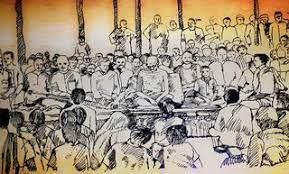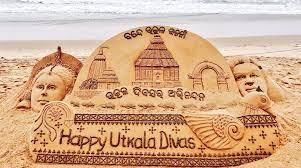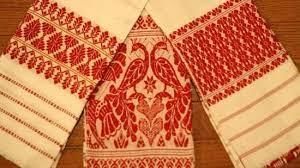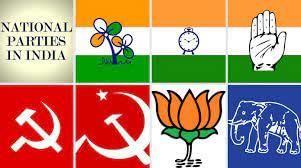UPSC Daily Current Affairs- 1st April 2023 | Current Affairs & Hindu Analysis: Daily, Weekly & Monthly PDF Download
GS-I
Vaikom Satyagraha

Why in News?
Kerala Chief Minister and Tamil Nadu Chief Minister, will inaugurate the centenary celebrations of the Vaikom Satyagraha.
Introduction:
- On March 30, 1924, in Vaikom, a non-violent agitation started, marking the beginning of “temple entry movements” across India.
- The Vaikom Satyagraha was launched in opposition to caste discrimination and untouchability, which were widespread across the country at the time.
Background:
- Caste discrimination and untouchability were rife in India in the 1920s, particularly in Travancore.
- Lower castes like the Ezhavas and Pulayas were considered polluting, and they were prohibited from entering temples or even walking on the roads surrounding them.
- The Vaikom Satyagraha was launched in response to these discriminatory practices.
The Vaikom Satyagraha:
- The Vaikom Satyagraha was a non-violent protest against the caste discrimination and untouchability prevalent in Travancore.
- It was the first time that Gandhian methods of nonviolent protest were employed in Travancore.
- The movement was led by prominent leaders like K. Kelappan and T. K. Madhavan.
- The protesters demanded the right of lower-caste Hindus to enter the temple in Vaikom, which was denied to them.
- The Satyagrahis faced violent opposition from upper-caste Hindus, but they continued their protest in a peaceful manner.
- The movement gained national attention and support, and it helped to raise awareness about the issue of caste discrimination.
Legacy:
- The Vaikom Satyagraha was a significant event in the history of India’s struggle against caste discrimination.
- The movement paved the way for other temple entry movements across the country.
- It also helped to create awareness about the need for social reform and led to the enactment of laws that abolished caste-based discrimination and untouchability.
- The legacy of the Vaikom Satyagraha continues to inspire people fighting against caste discrimination and other forms of social inequality.
Source: Indian Express
Utkal Dibas

Why in News?
Recently, the Prime Minister of India greeted the people on Utkal Dibasa.
About Utkal Dibas:
- The modern state of Odisha was established on 1 April 1936 at Kanika Palace, Cuttack, as a province in India, and consists predominantly of Odia speakers.1 April is therefore celebrated as Utkal Divas (Odisha Day).
What is the History of the Odisha?
- The British had occupied the Northern Circars, comprising the southern coast of Odisha, as a result of the Second Carnatic War by 1760, and incorporated them into the Madras Presidency gradually.
- In 1803, the British ousted the Marathas from the Puri-Cuttack region of Odisha during the Second Anglo-Maratha War. The northern and western districts of Odisha were incorporated into the Bengal Presidency.
- In 1903, the Utkal Sammilani organisation was founded to demand the unification of Odia-speaking regions into one state.
- On 1 April 1912, the Bihar and Orissa Province was formed.
- and on 1 April 1936, Bihar and Orissa were split into separate provinces.
- The new province of Orissa came into existence on a linguistic basis during the British rule in India, with Sir John Austen Hubback as the first governor.
- Following India's independence, on 15 August 1947, 27 princely states signed the document to join Orissa.
Source: PIB
GS-II
Assamese Gamosa

Why in News?
Recently, the ‘hybrid’ gamosa which was used for felicitating guests at a function sparked protests across Assam.
About Assamese gamosa
- The ‘gamosa or gamocha’ is a hand-woven rectangular cotton piece of cloth with red borders and different designs and motifs.
- It is traditionally offered to elders and guests as a mark of respect and honour by Assamese people.
- It is an integral part of all socio-religious ceremonies in the state and is considered an Assamese identity and pride.
- For specific purposes, it is also made of expensive materials like traditional Assamese ‘Pat’ silk and in different colours as well.
- The ‘gamosa’ meant for exchange during the ‘Bihu’ festival is known as ‘Bihuwan’.
- It is a unique scarf found only in Assam and also received Geographic Indication (GI) tag.
What is a Geographic Indication Tag?
- A Geographical Indication is a sign used on products that have a specific geographical origin and possess qualities or a reputation that are due to that origin.
- This tag is typically used for agricultural products, foodstuffs, wine and spirit drinks, handicrafts and industrial products.
- The Geographical Indications of Goods (Registration and Protection) Act, 1999seeks to provide for the registration and better protection of geographical indications relating to goods in India.
- This GI tag is valid for 10 years following which it can be renewed.
Source: Indian Express
Derecognition and Deregistration of Political Parties

Why in News?
Recently, a state party asked the Election Commission of India (ECI) not to derecognise the party in Andhra Pradesh.
What does Derecognition of Political Parties mean?
- About:
- Derecognition refers to the withdrawal of recognition of a political party by the ECI.
- Such parties are simply declared as registered-unrecognized parties.
- The ECI has the power to derecognize a political party if it violates the provisions of the Indian Constitution or the Representation of the People Act, 1951.
- Grounds for Derecognition of a Political Party as National party (as per ECI):
- If the party fails to secure at least 6% of the total votes polled in the general election to the LS or the legislative assembly of the state concerned, and if it fails to have at least 4 MPs elected in the last LS polls (also, it doesn't win 1 seat in the LS from the same state.); or
- If it has won at least 2% of the total seats in the LS from at least 3 states.
- If it fails to secure 8% of the total valid votes polled in the state at a General Election to the LS from the state or to the State LA.
- If the party fails to submit its audited accounts to the ECI on time.
- If the party fails to hold its organizational elections on time.
How does Derecognition of Parties differ from Deregistration?
- About:
- Deregistration refers to the cancellation of the registration of a political party. However, the ECI is not empowered to de-register parties.
- Once a political party is deregistered, it cannot contest elections.
- Grounds for Deregistration of a Political Party:
- A party can only be de-registered if:
- Its registration was obtained by fraud;
- It is declared illegal by the Central Government; or
- A party amends its internal Constitution and notifies the ECI that it can no longer abide by the Indian Constitution.
What is the Representation of People Act 1951?
- About:
- It regulates the actual conduct of elections and by-elections, provides administrative machinery for conducting elections, deals with the registration of political parties, specifies the qualifications and disqualifications for membership of the Houses, provides provisions to curb corrupt practices and other offences.
- RPA and Political Parties:
- Every association or body in order to become a political party must be registered with the ECI whose decision regarding registration will be final.
- The current rulebook allows EC to register parties but does not allow for deregistration.
- No provision in the RPA 1951 provides any mechanism for de-registration of a political party.
- The Parliament may have deliberately omitted vesting the ECI with this power to ensure its independence and unbiasedness in terms of organising free and fair elections.
- The ECI, however, has been demanding the power to regulate both registration and deregistration of political parties.
Source: TOI
What is the Export Promotion Capital Goods (EPCG) Scheme?

Why in News?
The recently announced Foreign Trade Policy (FTP) has added the Prime Minister Mega Integrated Textile Region and Apparel Parks (PM MITRA) scheme as an additional scheme eligible for benefits under the Common Service Provider Scheme of the Export Promotion Capital Goods Scheme (EPCG).
About Export Promotion Capital Goods (EPCG) Scheme:
- It is a trade promotion scheme implemented by the Indian government.
- It allows the duty-free import of capital goods for the purpose of export production in India.
- It was first operationalized on 1 April 2015.
- Aim: To encourage the production of goods for export by providing import duty concessions on capital goods.
- The EPCG scheme is administered by the Directorate General of Foreign Trade (DGFT) and is governed by the Foreign Trade Policy of India.
- Features:
- EPCG Scheme allows import of capital goods for pre-production, production and post-production at zero customs duty.
- It covers manufacturer exporters with or without supporting manufacturer(s), merchant exporters tied to supporting manufacturer(s) and service providers.
- Second-hand goods of any nature will not be permitted under the EPCG scheme.
What is the PM MITRA Scheme?
- It will offer the opportunity to create an Integrated Textiles Value Chain, right from spinning, weaving, processing/dyeing and printing to garment manufacturing etc., at one location and will reduce the logistics cost of the Industry.
- PM MITRA Parks will help in creating world-class industrial infrastructure that would attract large-scale investment, including foreign direct investment (FDI) and encourage innovation and job creation within the sector.
- Special Purpose Vehicle owned by the Centre and State Government will be set up for each park which will oversee the implementation of the project.
- Funding:
- The Ministry of Textiles will provide financial support in the form of Development Capital Support up to Rs. 500 crores per park to the Park SPV.
- A Competitive Incentive Support (CIS) of up to Rs 300 crore per park to the units in PM MITRA Park shall also be provided to incentivise speedy implementation.
- State governments will provide a contiguous and encumbrance-free land parcel of at least 1000 acres of land.
Source: FTP expands export promotion scheme to include PM MITRA
North Atlantic Treaty Organisation

Why in News?
NATO chief said that Finland would formally become a member within days, as he congratulated its President on clearing the final hurdle to joining.
What is NATO?
- The North Atlantic Treaty Organisation, or NATO, is a political and military alliance of 28 European countries and two countries in North America (United States and Canada).
- It was set up in 1949 by the US, Canada, and several western European nations to ensure their collective security against the Soviet Union.
- It was the US’s first peacetime military alliance outside the western hemisphere.
- Thirty countries are currently members of NATO, which is headquartered in Brussels, Belgium.
- The headquarters of the Allied Command Operations is near Mons, also in Belgium.
What is important about NATO’s collective defence?
- Members of NATO are committed to mutual defence in response to an attack by any external party.
- Collective defence lies at the very heart of NATO, “a unique and enduring principle that binds its members together, committing them to protect each other and setting a spirit of solidarity within the Alliance”.
- This is laid out in Article 5 of the North Atlantic Treaty, the founding treaty of NATO.
Article 5 reads: “The Parties agree that an armed attack against one or more of them in Europe or North America shall be considered an attack against them all and consequently they agree that, if such an armed attack occurs, each of them, in exercise of the right of individual or collective self-defence recognized by Article 51 of the Charter of the United Nations, will assist the Party or Parties so attacked by taking forthwith, individually and in concert with the other Parties, such action as it deems necessary, including the use of armed force, to restore and maintain the security of the North Atlantic area.”
Source: The Hindu
GS-III
Current Account Deficit

Why in News?
India’s current account deficit (CAD) narrowed to $18.2 billion (2.2% of GDP) in Q3 of FY23 from $30.9 billion (3.7% of GDP) in Q2 of FY23 and $22.2 billion (2.7%) in the year-earlier period, according to RBI Balance of Payments data.
What is the Current Account Deficit?
- A current account deficit occurs when the total value of goods and services a country imports exceeds the total value of goods and services it exports.
- The balance of exports and imports of goods is referred to as the trade balance. Trade Balance is a part of ‘Current Account Balance’.
- According to an earlier report of 2021, High Oil Imports, High Gold Imports are the major driving force, widening the CAD.
What is Balance of Payments?
- BoP of a country can be defined as a systematic statement of all economic transactions of a country with the rest of the world during a specific period, usually one year.
- Purposes of Calculation of BoP:
- Provides information about a country’s financial and economic situation.
- Can be used to evaluate whether the value of a country’s currency is appreciating or depreciating.
- Assists the government in making budgetary and trade policy decisions.
- Provides crucial data for analysing and comprehending the economic dealings of a country with other countries.
Components of the Balance of payments (BOP)
- Current account: It includes the financial transactions dealing with the export and import of goods, services, unilateral transfers, investment income etc.
- Capital account: It includes the financial transactions dealing with assets such as foreign direct investment, foreign portfolio investment, foreign loans etc.
- Official reserve transactions: It conducted by the central bank in case of the BOP deficit or BOP surplus.
- Errors and omissions: It is the element of BOP (other than the current account and the capital account) which refers to the balancing items reflecting the inability to record all the international financial transactions.
What are the reasons for the current account deficit?
- Intensifying geopolitical tensions and supply chain disruptions leading to crude oil and commodity prices soaring globally have been exerting upward pressure on the import bill.
- A rise in prices of coal, natural gas, fertilizers, and edible oils have added to the pressure on trade deficit.
- However, with global demand picking up, merchandise exports have also been rising.
Source: The Hindu
|
38 videos|5293 docs|1118 tests
|
FAQs on UPSC Daily Current Affairs- 1st April 2023 - Current Affairs & Hindu Analysis: Daily, Weekly & Monthly
| 1. What is the GS-I exam? |  |
| 2. What is the GS-II exam? |  |
| 3. What is the importance of daily current affairs in UPSC preparation? |  |
| 4. What are some effective ways to stay updated with daily current affairs? |  |
| 5. How can one effectively utilize daily current affairs for UPSC preparation? |  |
















